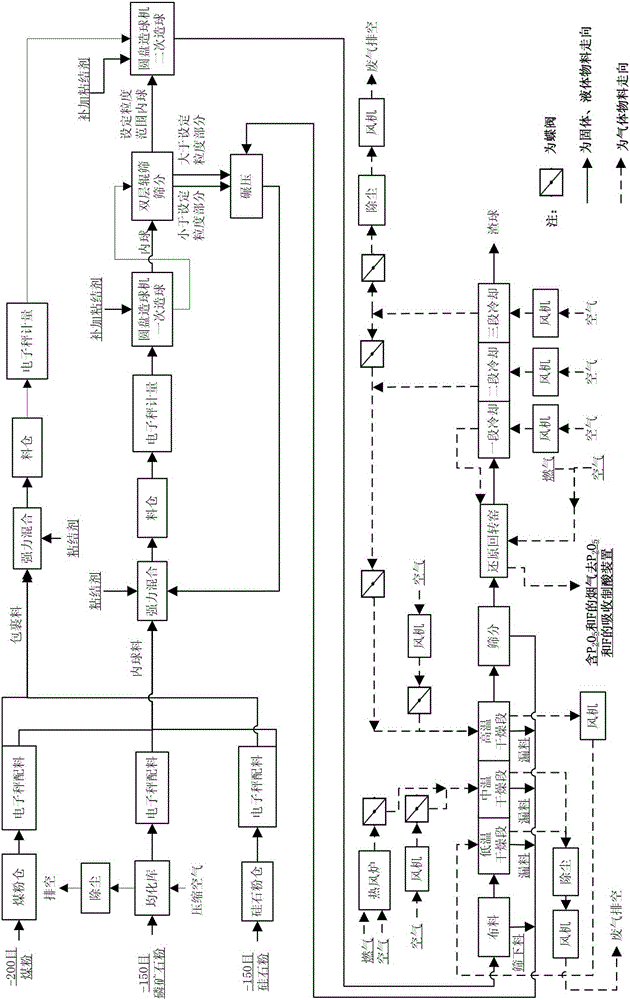Improved method for large-scale production of phosphoric acid with rotary kiln
A rotary kiln, an improved technology, applied in chemical instruments and methods, phosphoric acid, phosphorus oxyacid, etc., can solve the problems of atmospheric environmental pollution, high investment and operating costs, and insufficient mixing of raw materials.
- Summary
- Abstract
- Description
- Claims
- Application Information
AI Technical Summary
Problems solved by technology
Method used
Image
Examples
Embodiment
[0094] a kind of like figure 1 The method for the large-scale production of phosphoric acid with a rotary kiln of the improved type shown may further comprise the steps:
[0095] 1. Raw material pretreatment:
[0096] Such as figure 2 As shown, the raw material pretreatment method of this embodiment uses the raw material pretreatment process system of this embodiment, and the pretreatment process system includes a carbonaceous reductant pretreatment system, a phosphate rock pretreatment system and a silica pretreatment system, the outlets of carbonaceous reductant pretreatment system, phosphate rock pretreatment system and silica pretreatment system are all connected to an inner ball material mixing device, carbonaceous reductant pretreatment system and silica pretreatment system through the first conveying equipment The outlets are also connected to a shell material mixing device through the second conveying equipment. In this embodiment, coal (coke powder or petroleum co...
PUM
| Property | Measurement | Unit |
|---|---|---|
| thickness | aaaaa | aaaaa |
Abstract
Description
Claims
Application Information
 Login to View More
Login to View More - R&D
- Intellectual Property
- Life Sciences
- Materials
- Tech Scout
- Unparalleled Data Quality
- Higher Quality Content
- 60% Fewer Hallucinations
Browse by: Latest US Patents, China's latest patents, Technical Efficacy Thesaurus, Application Domain, Technology Topic, Popular Technical Reports.
© 2025 PatSnap. All rights reserved.Legal|Privacy policy|Modern Slavery Act Transparency Statement|Sitemap|About US| Contact US: help@patsnap.com



